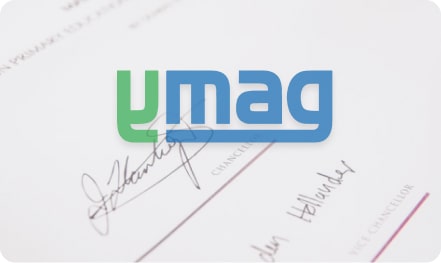The world is changing, and so are consumers. Once averse to taking out an online insurance policy, French people are now increasingly prepared to take the plunge (36% of respondents as found in a study by Xerfi Spécific).
The reality is that customer relations in insurance have shifted to digital channels, as illustrated by the surge in web-based offers.
However, as a result of this trend, insurers are discovering new responsibilities to provide customers with comprehensive, intuitive and secure policies.
For this reason, electronic signature integration is now a must. So, why is it imperative? And how does it work? Oodrive explains all in this article.
Why integrate the electronic signature into insurance contracts?
In the insurance sector, the electronic signature opens up opportunities to insurance providers and policyholders alike.
Essentially, it combines the best of both worlds and runs as a fully-fledged phygital solution. With a remote signature solution, customers are able to monitor the entire policy process online, enjoying full autonomy.
They also benefit from the support of an advisor in the completion of their dematerialised signature. This is why signature digitalisation must be considered a complementary service that brings its own benefits without compromising security.
Benefits of the electronic signature in the insurance sector
For customers, the use of the electronic signature in the insurance sector caters to new consumer habits which have become the norm.
Nowadays, the process is mostly completed via the Internet, whether it’s searching for information, comparing offers or deciding on the best coverage.
As such, it’s only natural for insurers to include a final stage online for policyholders. This is all the more relevant since the solution can streamline other contractual procedures such as insurance claims.
At the same time, this does not exclude anyone with a more “old school” approach towards advisors and more traditional processes which may still result in the purchase of an online insurance policy.
Where insurers are concerned, the electronic signature gives them a commercial and operational advantage.
Thanks to the electronic signature, customer relations are more flexible, deployment is faster, business processes are optimised and all forms of consultancy are facilitated.
Last but not least, remote signatures mean reduced costs. Electronic signatures eliminate paper, printing and postage trails and they also save valuable time so you can take on more policies.
Remote signatures: the hallmark of security for insurance contracts
That said, a number of insurers consider the policy stage too sensitive to be dematerialised, mainly because of regulatory requirements. In this respect, the final stage of the “sales tunnel” in insurance is always difficult to complete.
In spite of this, the electronic signature provides real assurances. In addition to its probative value, which is identical to that of a handwritten signature, the digital signature is supported by three security features:
- Verified signatory identity, using an authentication system during online signature.
- Guaranteed integrity of the signed document, which cannot be edited or amended once the electronic signature is affixed.
- Selected security levels to match the criticality of the signed insurance contract. In such a scenario, car, home and health insurance policies may only need a level 1 signature; savings and pensions policies require a higher level – level 2 or 3; and life insurance policies call for more stringent identity checks, combined with a level 4 signature.
With that said, the remote signature belongs to a secure infrastructure – one that is capable of lifting any legal constraints to its implementation in the insurance universe.
So, why wait any longer? Integrate the electronic signature into your business software today!









